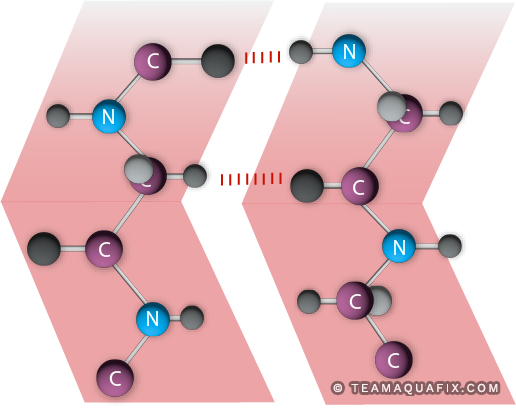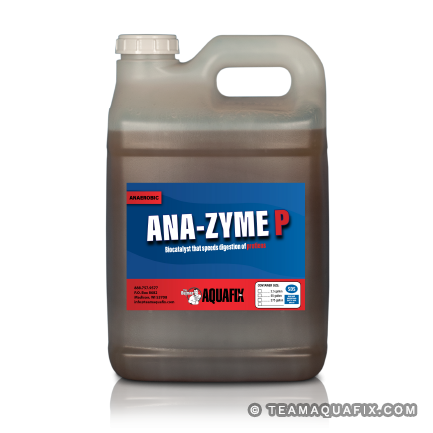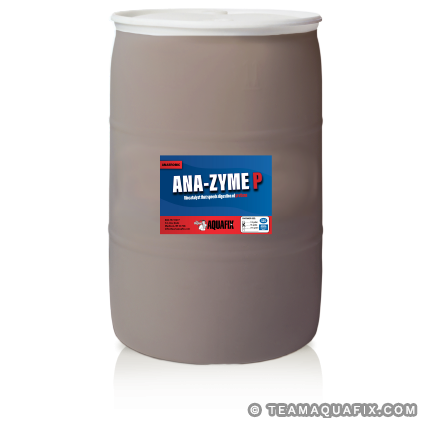Product Resources
PDF Downloads: Product info, SDS, and white papers
🗎 Ana-Zyme P Info Sheet
🗎 Ana-Zyme P SDS
🗎 Impact of Ana-Zyme P on Anaerobic Lagoon Methane Generation in a Meat Packing Plant
🗎 Impact of Ana-Zyme P on the Anaerobic Digestion of Dairy Farm Manure
Ana-Zyme P
Biocatalyst for the Anaerobic Breakdown of Proteins
- Speeds the breakdown of proteins into amino acids
- Lowers levels of volatile solids and improves biological methane potential
- Works between 59 -140°F (15-45°C) and between pH 6.0 and 8.5
- Provide more consistency in operations and methane generation
Anaerobic digester upset & troubleshooting:
Get answers and solution recommendations in 2 days when you complete this form.
$280.00 – $12,685.00
Product Info
Proteinaceous materials are among the most difficult substrates for anaerobic digesters to break down, due to their high nitrogen concentration. They often hinder anaerobic digester performance by passing through the process before they can be completely degraded. Ana-Zyme P bridges the gap between the considerable potential of anaerobic digesters and difficult proteins by breaking them down in a way that methanogens cannot. The rapid hydrolysis of these complex proteins into soluble amino acids creates food and an environment more favorable for methanogenic bacteria.
Aquafix laboratories partners with those who run or operate anaerobic digesters of any kind through technical consulting and biological methane potential testing. Feel free to reach out to us for technical assistance at any time.
 This diagram represents a small part of a protein molecule. Nitrogen (blue atoms) makes up about 16% of the mass of a protein. Generally, anaerobic feed shouldn’t be over 4% nitrogen. In addition, carbon (purple atoms) in proteins is difficult to access anaerobically, making it a poor carbon substrate.
This diagram represents a small part of a protein molecule. Nitrogen (blue atoms) makes up about 16% of the mass of a protein. Generally, anaerobic feed shouldn’t be over 4% nitrogen. In addition, carbon (purple atoms) in proteins is difficult to access anaerobically, making it a poor carbon substrate.
Ana-Zyme P improves anaerobic efficiency by outsourcing that extra metabolic step in the degradation of proteins so the anaerobic bacteria can focus their resources on breaking down carbon substrates and producing methane. This leads to improved methane generation, lowers effluent COD, and improved volatile solids destruction.
Dose Rate
Product Pairings
Use BioGas1 for trace metal deficiency.
Applications and Benefits
-
Anaerobic digesters/lagoons for:
- Dairy processing
- Meat processing
- Improves anaerobic enzyme production
- Improves volatile solids destruction
- Improves methane production
- Releases amino acids from complex proteins







Reviews